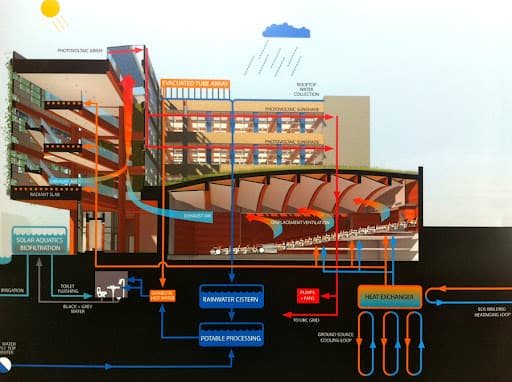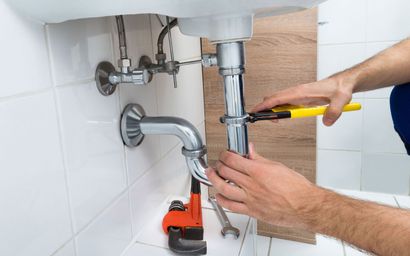We've found this great article about Exploring Your Homes Plumbing Anatomy below on the internet and figured it made good sense to talk about it with you here.

Recognizing exactly how your home's plumbing system functions is necessary for each property owner. From supplying clean water for drinking, food preparation, and bathing to safely getting rid of wastewater, a well-kept plumbing system is crucial for your family members's health and wellness and comfort. In this thorough guide, we'll explore the complex network that comprises your home's pipes and deal suggestions on maintenance, upgrades, and dealing with common concerns.
Intro
Your home's plumbing system is more than simply a network of pipelines; it's a complicated system that guarantees you have accessibility to tidy water and effective wastewater elimination. Understanding its components and exactly how they work together can aid you avoid pricey repair services and ensure every little thing runs smoothly.
Standard Components of a Pipes System
Pipes and Tubes
At the heart of your plumbing system are the pipelines and tubing that bring water throughout your home. These can be made of different products such as copper, PVC, or PEX, each with its advantages in regards to sturdiness and cost-effectiveness.
Fixtures: Sinks, Toilets, Showers, and so on.
Components like sinks, toilets, showers, and bath tubs are where water is utilized in your home. Recognizing how these components connect to the plumbing system assists in detecting problems and intending upgrades.
Valves and Shut-off Points
Shutoffs control the circulation of water in your plumbing system. Shut-off valves are critical during emergency situations or when you need to make fixings, allowing you to separate parts of the system without interfering with water flow to the whole residence.
Supply Of Water System
Key Water Line
The major water line connects your home to the local water or a private well. It's where water enters your home and is dispersed to numerous fixtures.
Water Meter and Pressure Regulatory Authority
The water meter actions your water usage, while a pressure regulatory authority guarantees that water moves at a safe pressure throughout your home's plumbing system, avoiding damage to pipes and components.
Cold Water vs. Warm water Lines
Understanding the distinction between cold water lines, which provide water straight from the main, and hot water lines, which bring warmed water from the hot water heater, aids in troubleshooting and preparing for upgrades.
Drainage System
Drain Piping and Traps
Drain pipes bring wastewater far from sinks, showers, and toilets to the drain or septic system. Catches protect against sewer gases from entering your home and also trap debris that might trigger blockages.
Ventilation Pipelines
Ventilation pipes allow air right into the water drainage system, stopping suction that could slow drainage and create catches to vacant. Appropriate ventilation is essential for maintaining the honesty of your pipes system.
Value of Appropriate Drainage
Making sure appropriate drain stops back-ups and water damages. On a regular basis cleaning up drains and maintaining traps can prevent costly repair work and extend the life of your plumbing system.
Water Heating System
Sorts Of Hot Water Heater
Hot water heater can be tankless or typical tank-style. Tankless heating units heat water on demand, while tanks save warmed water for instant use.
Upgrading Your Plumbing System
Factors for Upgrading
Upgrading to water-efficient components or replacing old pipelines can enhance water quality, lower water expenses, and enhance the worth of your home.
Modern Pipes Technologies and Their Benefits
Discover innovations like smart leakage detectors, water-saving toilets, and energy-efficient hot water heater that can save cash and minimize environmental influence.
Cost Factors To Consider and ROI
Determine the upfront expenses versus long-term financial savings when considering plumbing upgrades. Many upgrades spend for themselves with decreased utility costs and fewer repairs.
Just How Water Heaters Link to the Plumbing System
Comprehending just how water heaters connect to both the cold water supply and warm water distribution lines helps in detecting problems like insufficient warm water or leaks.
Maintenance Tips for Water Heaters
On a regular basis flushing your water heater to eliminate sediment, examining the temperature setups, and checking for leaks can expand its life expectancy and boost power efficiency.
Common Pipes Problems
Leakages and Their Causes
Leakages can occur as a result of aging pipelines, loose installations, or high water stress. Dealing with leakages promptly avoids water damages and mold growth.
Blockages and Clogs
Clogs in drains and commodes are often triggered by purging non-flushable items or a buildup of oil and hair. Making use of drain displays and being mindful of what drops your drains can stop obstructions.
Indications of Pipes Problems to Look For
Low tide pressure, sluggish drains pipes, foul odors, or uncommonly high water costs are signs of prospective pipes problems that must be resolved promptly.
Plumbing Upkeep Tips
Regular Evaluations and Checks
Set up annual plumbing assessments to catch concerns early. Look for indications of leakages, corrosion, or mineral accumulation in taps and showerheads.
Do It Yourself Maintenance Tasks
Easy tasks like cleaning tap aerators, looking for toilet leaks utilizing color tablet computers, or insulating subjected pipelines in cool climates can avoid major pipes concerns.
When to Call a Professional Plumbing
Know when a pipes problem needs expert know-how. Trying complicated repair services without appropriate understanding can cause even more damage and higher repair work costs.
Tips for Reducing Water Usage
Simple habits like dealing with leakages without delay, taking much shorter showers, and running full loads of laundry and dishes can save water and lower your utility expenses.
Eco-Friendly Plumbing Options
Think about sustainable plumbing materials like bamboo for floor covering, which is durable and green, or recycled glass for kitchen counters.
Emergency situation Readiness
Actions to Take During a Plumbing Emergency situation
Know where your shut-off shutoffs lie and how to turn off the supply of water in case of a burst pipe or major leakage.
Significance of Having Emergency Situation Calls Convenient
Maintain contact information for regional plumbing professionals or emergency situation solutions readily available for quick reaction during a plumbing dilemma.
Environmental Effect and Conservation
Water-Saving Fixtures and Home Appliances
Setting up low-flow faucets, showerheads, and bathrooms can substantially minimize water use without giving up efficiency.
Do It Yourself Emergency Situation Fixes (When Suitable).
Short-lived solutions like making use of air duct tape to spot a dripping pipe or positioning a pail under a leaking faucet can minimize damages up until an expert plumbing arrives.
Verdict.
Understanding the anatomy of your home's pipes system encourages you to keep it successfully, saving time and money on repair work. By following regular upkeep routines and remaining notified about modern-day pipes technologies, you can guarantee your plumbing system operates efficiently for several years to find.
Understanding Your Home Plumbing System: A Comprehensive Guide
Plumbing System: The Lifeline of Your Home
At its core, the plumbing system is designed to perform two primary functions: bring fresh water into your home and remove wastewater. The system is a network of pipes, fixtures, and other components that transport water and sewage. Residential plumbing systems include potable water supply lines, drain-waste-vent (DWV) systems, and various plumbing fixtures that make water use in daily tasks possible.
Key Components:
Water Supply: This part of your plumbing system brings municipal water into your home, passing through the main water supply line. It s responsible for supplying all water needs, from drinking to bathing.
Drainage System: It carries waste and water away from your home to the sewer or septic system. This system includes all the piping within your home that leads to external sewage or septic systems.
Vent System: An essential yet often overlooked component, the vent system allows sewer gases to escape and lets air into the drainpipes, ensuring water and waste move correctly through the system.
Fixture: More Than Just Taps and Toilets
Plumbing fixtures are the most interactive parts of the plumbing system, including faucets, showers, toilets, and sinks. Each fixture is connected to the plumbing system and plays a role in either the delivery of freshwater or the disposal of waste and wastewater.
Types of Fixtures:
Faucets and Sinks: Used for washing hands, dishes, and other daily water needs. Toilets: Dispose of human waste through the sewage system. Bathtubs and Showers: Provide bathing facilities, requiring both hot and cold water supply. Water Supply: The Source of Life
The water supply system is a critical component, ensuring that potable water is available throughout your home for various uses, including drinking, cooking, and cleaning. This system consists of pipes that distribute water to different parts of the house, controlled by valves to regulate the water flow.
Types of Plumbing: Materials and Methods
Various types of plumbing systems and materials are used in residential settings, each with its advantages and applications. From copper and PVC pipes for water supply to cast iron and ABS for drainage, the choice of materials can impact the longevity and efficiency of your plumbing system.
https://intownplumbingtx.com/articles/home-plumbing-system-guide/

I found that blog entry on Plumbing Installation 101: All You Need to Know while doing research the internet. Appreciated our content? Please quickly share it. Help another person find it. I value reading our article about Understanding Your Home's Plumbing Anatomy.
Visit Our Site